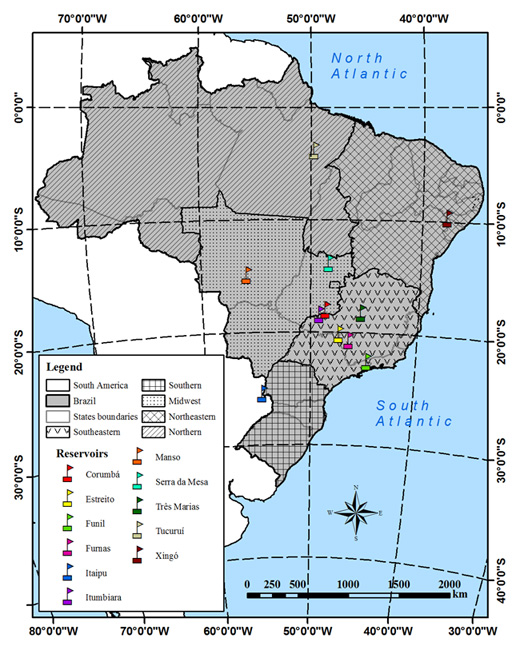Estrutura termohalina e massas de água ao norte da Península Antártica revelada a partir de dados in situ coletados por elefantes-marinhos do sul (Mirounga leonina)
Palavras-chave:
Estrutura termohalina, massas de água, península Antártica, elefante-marinho do sul, oceano austral
Resumo
A Península Antártica Oeste é uma das regiões do planeta que está se aquecendo rapidamente e apresenta alta diversidade animal principalmente ao longo de sua plataforma continental. Esta região também é de grande importância devido à mistura causada pela interação de águas do Mar de Weddell (MW), do Estreito de Bransfield (EB) e da Corrente Circumpolar Antártica (CCA) que transmitem características termohalinas e nutrientes de diferentes locais de formação e mais tarde se conectam com todos os oceanos do planeta. Entretanto, estudos sobre a variabilidade temporal das condições oceanográficas desta região que consequentemente determinam a formação de massas d’água, são escassos em função das dificuldades logísticas envolvidas em levantamentos oceanográficos e monitoramentos tradicionais durante os meses de inverno. Para esse trabalho, variações da estrutura termohalina e das massas d’água nas proximidades e abaixo do gelo marinho na região norte da Península Antártica (PA) e Mar da Escócia (ME) foram registradas entre os meses de fevereiro e novembro de 2008 por duas fêmeas de elefante-marinho do sul (EMS, Mirounga leonina) instrumentadas com Conductivity–Temperature–Depth/Satellite-Relay Data Logger (CTD–SRDL). 1330 perfis verticais de temperatura e salinidade foram coletados por estes indivíduos que foram instrumentados pelo Projeto MEOP-BR na Ilha Elefante, Shetlands do Sul. Esses perfis, juntamente com diagramas de estado espalhado permitiram a identificação de massas d’água e suas alterações na estrutura vertical oceânica. Dentre as massas d’água identificadas citamos: Água de Superfície Antártica (AASW), Água de Inverno (WW), Água Cálida Profunda (WDW), Água Cálida Profunda Modificada (MWDW), Água Circumpolar Profunda (CDW), Água Profunda Circumpolar Superior (UCDW), Água Profunda Circumpolar Inferior (LCDW) e Água de Plataforma de Gelo (ISW). Nossos resultados mostram que a estrutura vertical oceânica sofre alterações que tradicionalmente não podem ser monitoradas, principalmente durante o inverno austral, e que os EMS são importantes e modernas plataformas para coleta de dados oceanográficos, permitindo um aumento em nosso conhecimento dos processos oceanográficos na região antártica.
Publicado
26/04/2013
Edição
Seção
Artigos
Autores mantêm os direitos autorais pelo seu artigo. Entretanto, repassam direitos de primeira publicação à revista Ambiente & Água - An Interdisciplinary Journal of Applied Science. Em contrapartida, a revista pode transferir os direitos autorais, incluindo direito de enviar o trabalho para outras bases de dados ou meios de publicação. A revista exerce a licença CC BY 4.0






